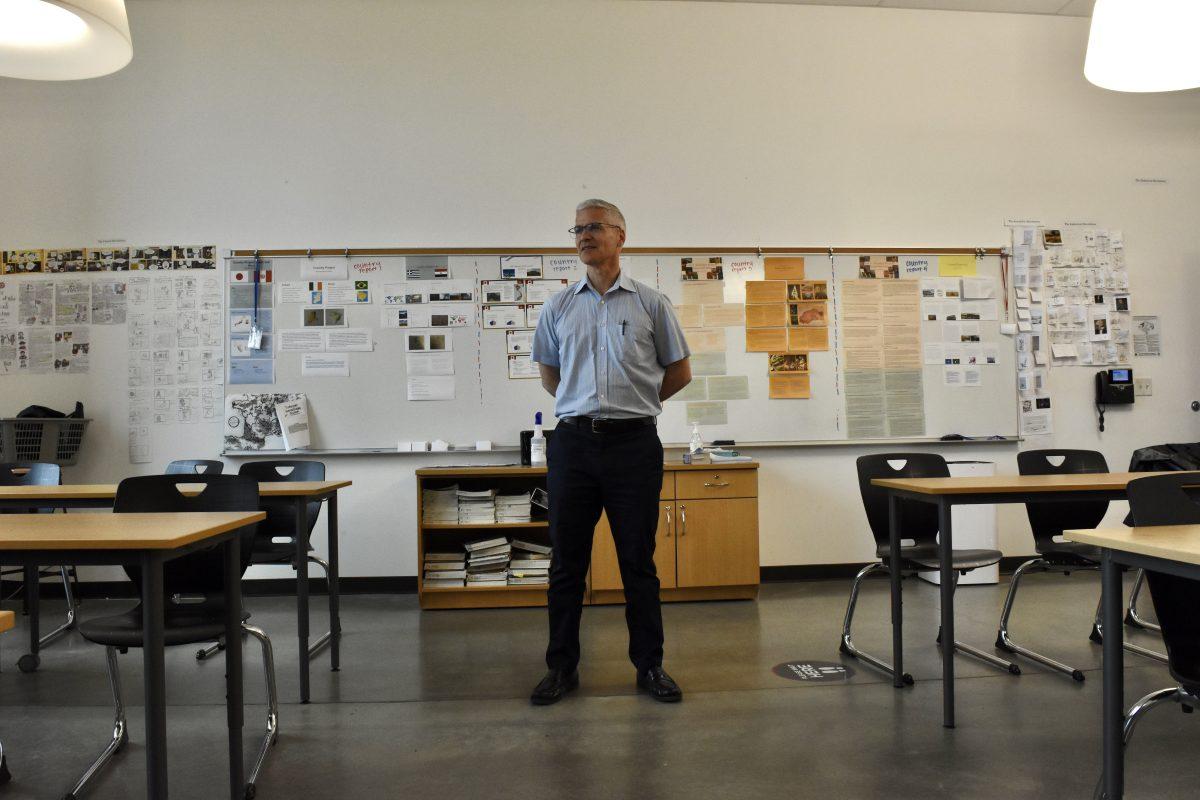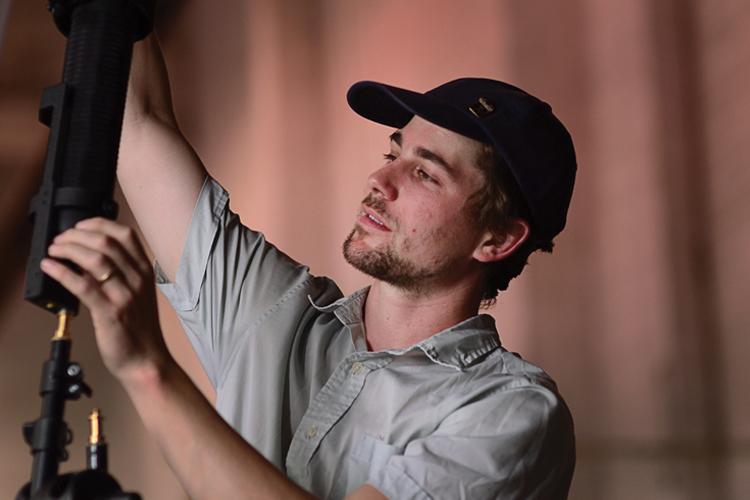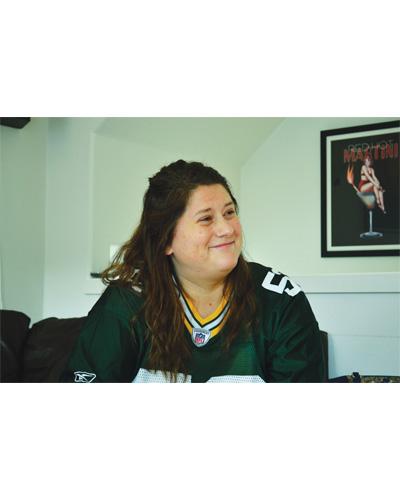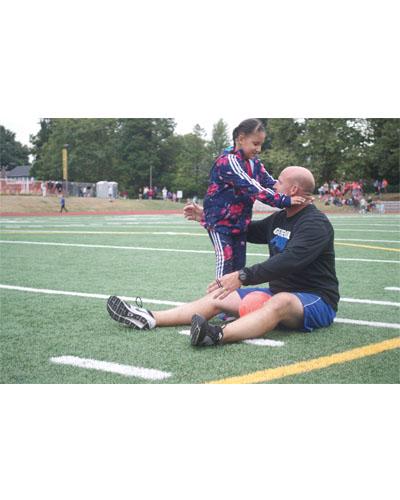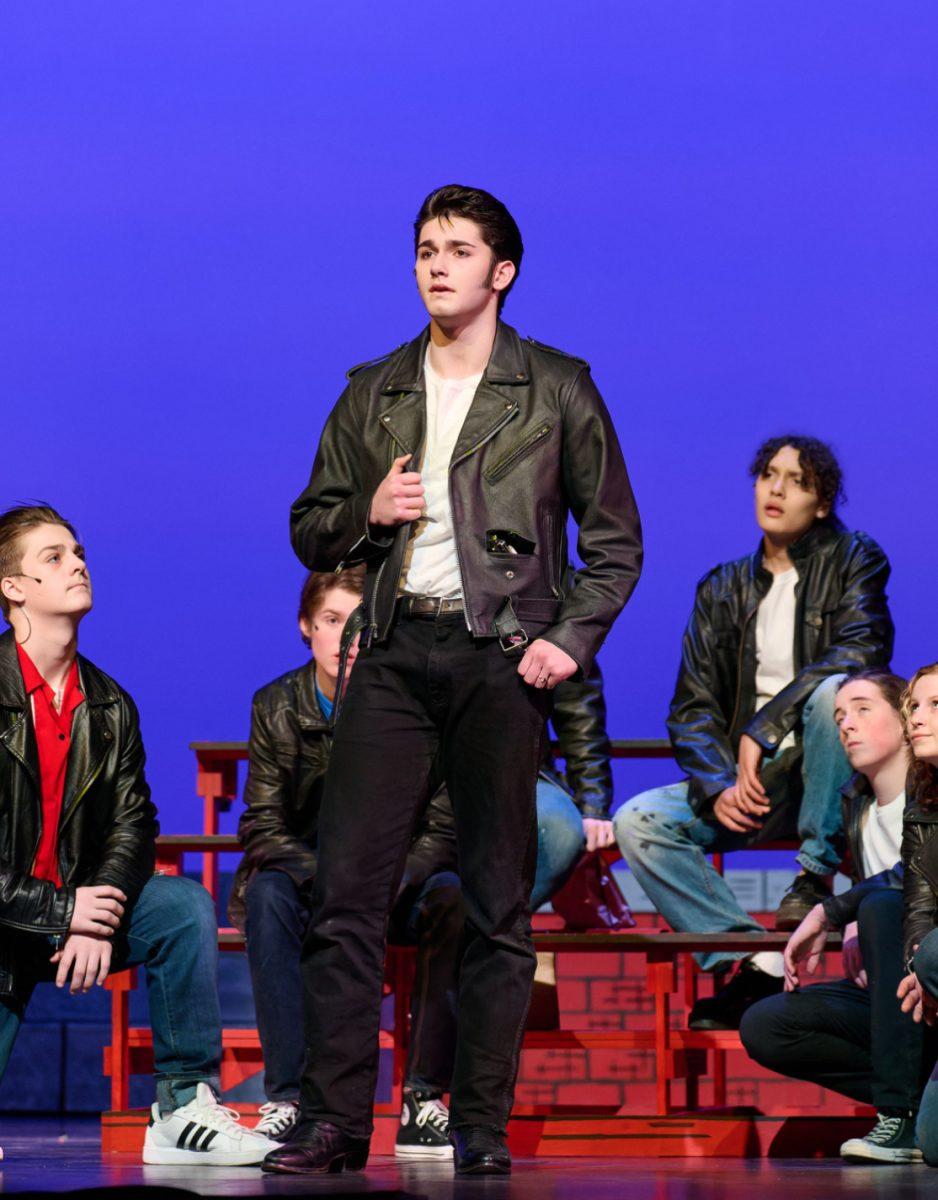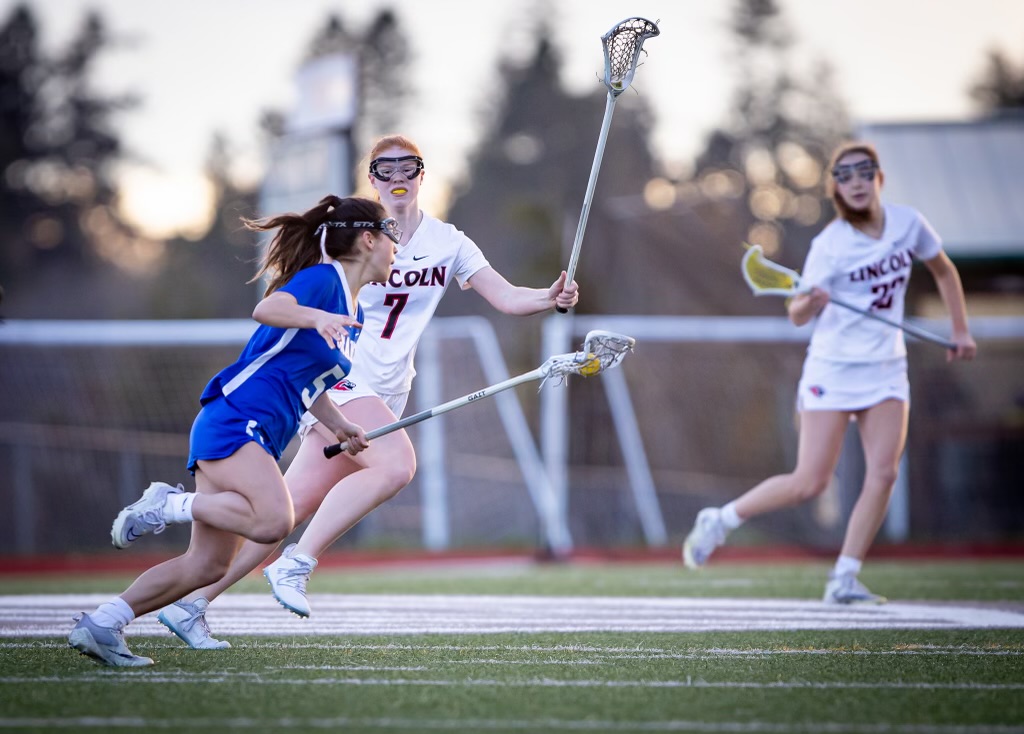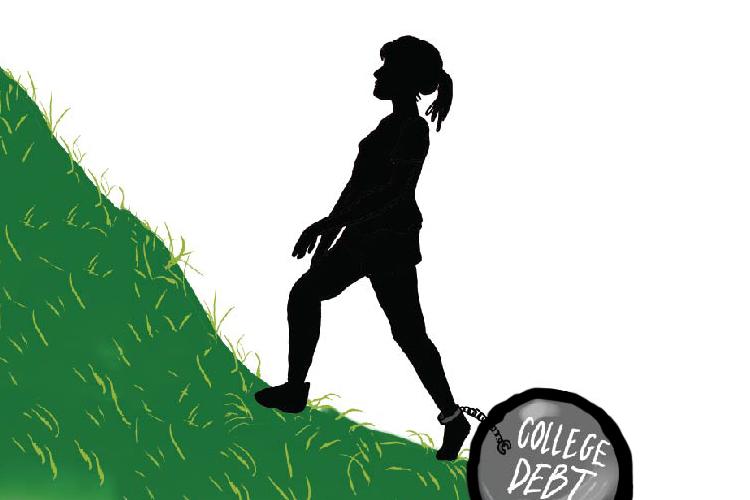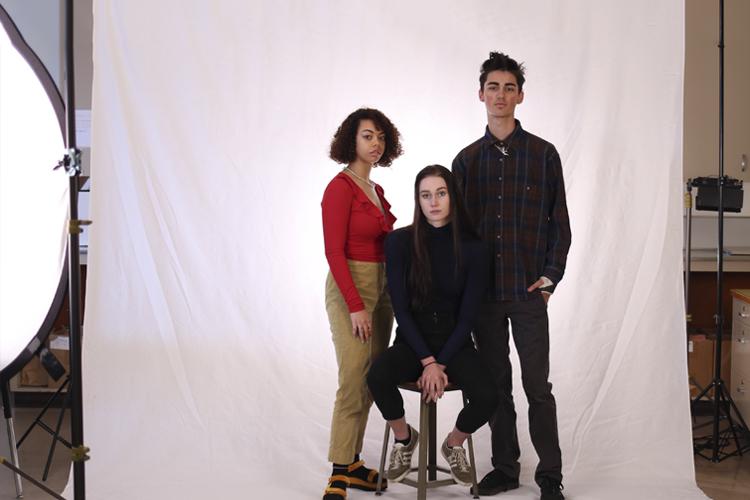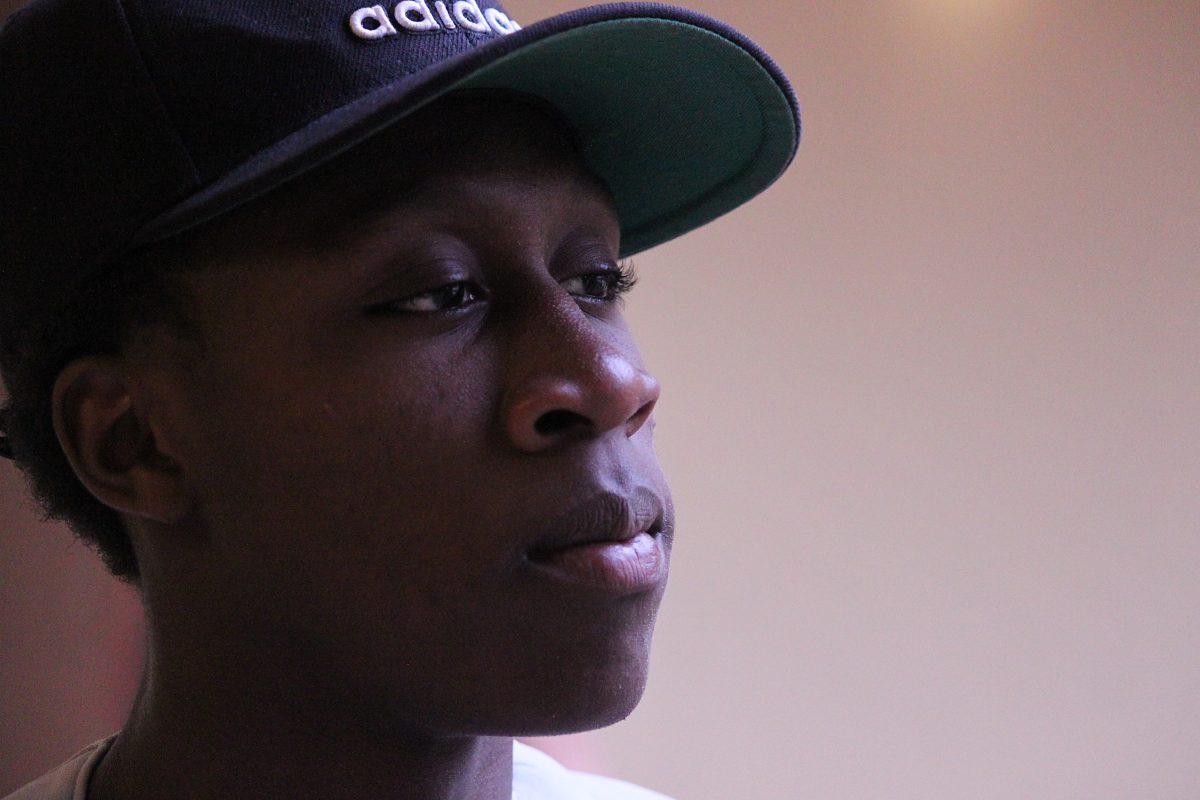
Grant junior Fia Leek’s heart races as she dusts off her hands and strides towards the lyra above her — a hoop, suspended from the ceiling, used for aerial acrobatics.
Gripping the cool metal, Leek gracefully places her body in a seated position in the hoop. The distance between Leek and the ground grows larger, and she feels a soft breeze brush against her face as she is lifted into the air. A soft melody echoes through the room and Leek begins to fly.
On this day in particular, Leek continues her triweekly practice for the upcoming piece, “The Princess Bride.”
Anytime Leek is in the air, she feels a rush of clarity. All of her focus goes into the movements, and the music is the only sound she can hear. Having the opportunity to craft her own dances pushes Leek to continue to strengthen her skills.
‘
Leaving practice, Leek forgets all of the negative emotions that were bothering her earlier in the day. She walks away having put all of her energy and focus into the activity at hand, free from her usually inescapable cloud of anxiety.
The tight-knit community of aerial dancers has also provided Leek with a comfortable space to be herself. Not only can Leek dance without fear of judgement, but she can share about her anxiety and depression. “Everyone’s really supportive,” she says. “(They) also know what everyone else has going on, and it’s really open.”
Leek specifically struggles with social anxiety and often finds herself overthinking. “It was just so great to go from having a hard day at school to dancing for an hour and working really hard, and just sweating, and just being tired,” she says.
. . .
Leek was born Sofia Leek on January 23, 2001, to Heather and Bob Leek. She has grown up constantly surrounded by the encouragement her parents have given her. “They’ve been really great about making sure that I’m doing whatever I want to do and that I’m supported,” she says.
Though an interest in dance hung in the air ever since Leek stopped taking ballet classes as a young child, she never thought it would become a passion of hers.
Leek’s mother took her to her first aerial dance performance at a summer “Art in the Dark”` show — a live aerial performance presented by the A-WOL Dance Collective — before entering fifth grade. The twirls and tricks that the aerialists performed instantly grabbed her attention. Leek’s eyes widened with curiosity and amazement, drawn to the colorful silks and graceful dancers gliding through the air.
“It was just so strange. It looks like you’re floating, and it just kinda looks magical to a younger kid,” says Leek. “I just wanted to be part of the magic.”
Later that evening, Leek was given the chance to speak with one of the dancers in the company.
“My friend’s mom knew someone that was in the company, and so we ended up getting to talk to her,” says Leek. “It was really intimidating to watch her do all this amazing stuff, and then as a little kid I was like, ‘That was so cool.’”
She left that night in awe, instantly inspired to do exactly what she had seen.
As soon as the opportunity presented itself, Leek asked her mother for aerial lessons and began in sixth grade.
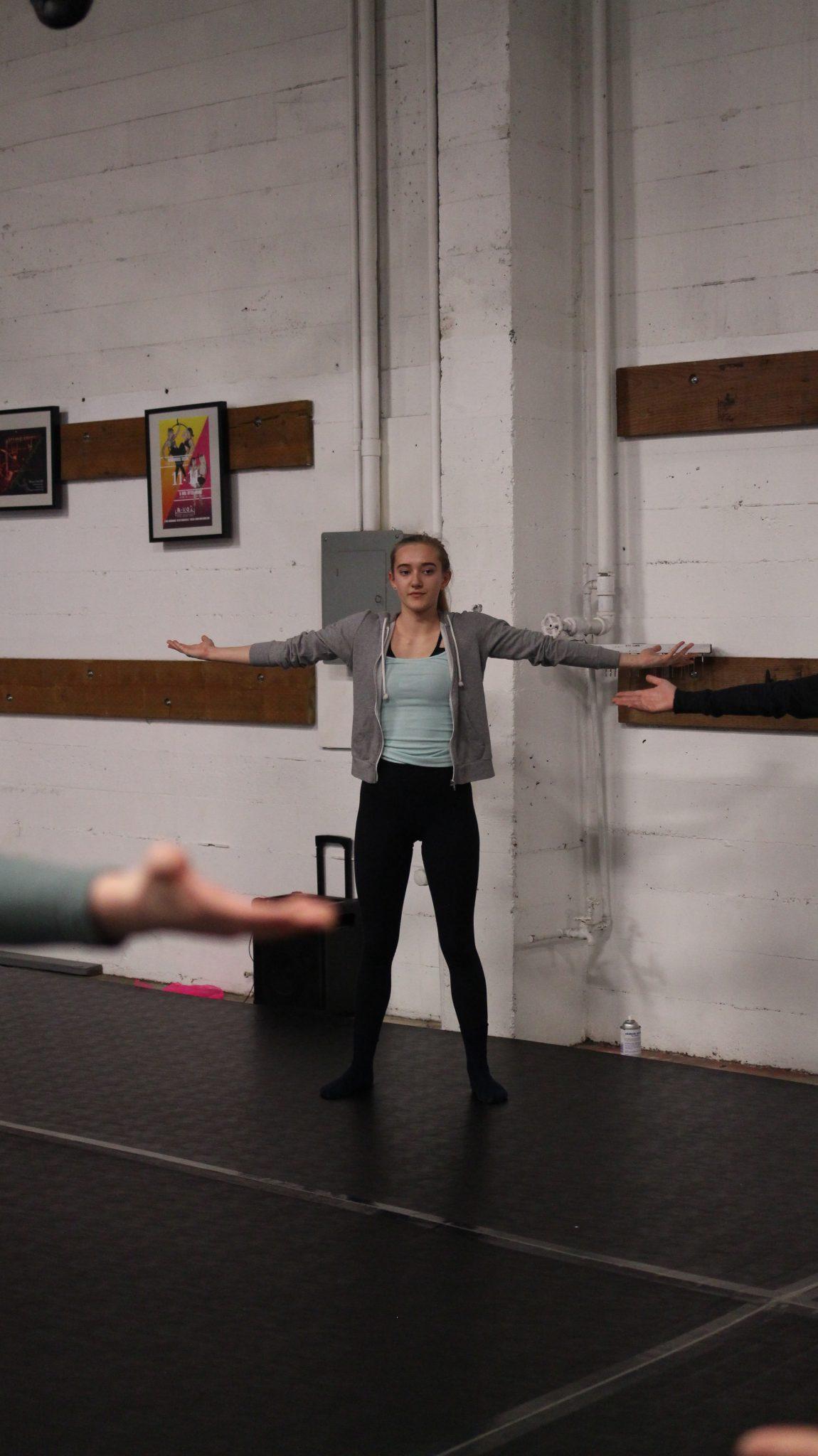
For Leek, putting focus into an activity relieves anxiety, allowing a break from the negativity that had been flooding her mind throughout the day. “I wanted to see if dance would be that fit, and it really was,” she says. “The teachers were really great, and when I started, the classes were really small, and so it was almost like private lessons. Everything really got tailored to how you needed it to be, so I felt special because it was just about me.”
The smaller classes gave Leek the opportunity to learn at a pace best for her. “I really … got to do whatever I wanted to do,” she says. “It was like learning new skills, but I was totally deciding what I wanted to do. I was super in control of everything.”
Aerial dance quickly became an important change for Leek — especially when anxiety and depression became prominent in her life.
In the years leading up to her diagnosis of anxiety and depression in eighth grade, she began feeling uncomfortable with the transition to high school. The thought of making new friends worried her. Having gone to a K-8 school, she never had the chance to branch out from the close circle of friends she had known for years.
Leek’s mother remembers how anxiety had impacted Leek since an early age, and noticed it especially as she grew into her teenage years. “(She) didn’t wear all like the gothy makeup and stuff,” says Heather Leek. “For me, it was more, I (saw her) frustration, I could see (her) turning more inward instead of outwards.”
Leek often thought of the anxiety that surrounded issues with her friendships as invalid, leading her to become more internal with her emotions. She stopped communicating with and talking to her mother.
“When I first meet people, I have a really hard talking about myself or being able to clearly explain my ideas or just seem really calm because I get really overwhelmed with what people are thinking,” says Leek.
Oftentimes, she struggled to find the motivation to get through the day or even out of her bed. She felt stuck and helpless, constantly at a loss for energy.
While she found solace in aerial dance, it was difficult to express her emotions to others when she struggled to find energy and motivation.
However, close friends knew about the internal struggles Leek had been facing and recommended she talk to her mother. “It took awhile to get to the point where I thought I would ever be that honest with my mom, so encouragement from my friends (helped),” says Leek.
She eventually opened up to her mother and her mother encouraged Leek to see her school counselor, who later suggested she may have anxiety and depression.
Worry quickly consumed her mind; she didn’t want her mental health to define her. “Anxious” and “depressed” were not the words she wanted people to think of when they thought of her.
“There’s a really big stigma about people who have depression and anxiety, like they’re this certain type of person,” says Leek. “I didn’t wanna be … filed in a certain category. I just wanted to be myself, and be the same person.”
But Leek’s close friends with mental health struggles had helped her learn to look past the stereotypes of anxiety and depression. Leek then noticed how having a name for what she was feeling made it easier for her to describe what was going on.
At this time, Leek began to solidify what aerial dancing meant for her. “I think I definitely recognized that it was an escape at that point,” says Leek. “I was having a hard time, and it was just something that kept my mind off of it, and kinda refreshed the day, I guess. So aerial … it became … more important to me.”
Leek had experienced instances in which teachers questioned the reality of her struggles when she needed to take a break, which prompted her to get a 504 plan.
“I needed to be able to tell my teachers that I needed to go on a walk or something, just if I was feeling really overwhelmed,” says Leek. “I needed teachers to know that I have this social anxiety and I’m not making it up, it’s very real.”
While these situations at school were frustrating, Leek could look to the Grant dance program for support: a place where SHE felt safe and could find relief, similar to the way she began to feel when dancing aerial.
Now seven years into the program, Leek has begun to deepen her passion for aerial dance by creating choreography and incorporating her own style and thoughts into her pieces at A-WOL Dance Collective.
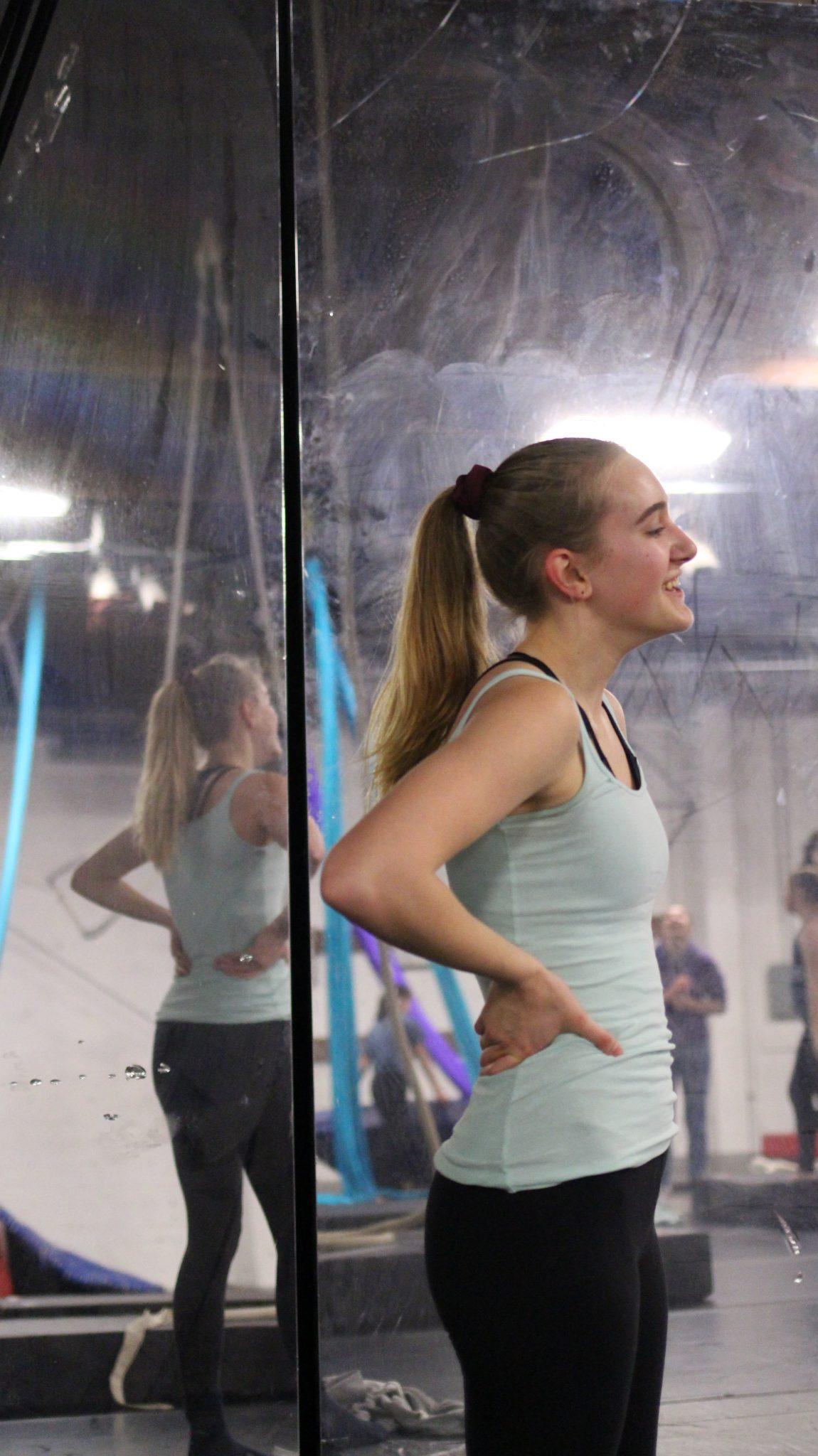
On a recent Saturday, Leek and a friend stretch before practicing a piece that she has co-choreographed. Leek finds it easy to openly talk with her dance partner about the difficult day she has had — something she previously struggled to do. She feels that she can truly be herself in this space and strongly believes in standing by her own opinions and outlook.
“A lot more people have told me what’s going on with them, and more people feel comfortable talking to me about it, because they know that I have my own point of view,” says Leek. “Something I’ve picked up on (is) … listening to people and not trying to relate to them, ‘cause you can’t.”
Leek spends her seventh year of aerial dancing with the Aeros — a program for the youth dancers of A-WOL Dance Collective, in which she is one of the oldest. There, she plans to continue aerial dancing and choreographing.
At Grant, she can be found dancing with the Grant Dance Collective (GDC), a group of people with which Leek is comfortable and can be herself.
Mackenzie Lawrence, Leek’s close friend who dances in GDC as well, finds that their connection through dance has helped Leek with her mental health and created a stronger friendship between the two.
“We have this passion for something that’s so active, yet is also so emotional, and I think definitely having that escape is so helpful … Somewhere you can go to just be yourself and it’s nobody else’s space,” says Lawrence. “That’s time for herself and that’s really soothing.”
Lawrence has watched Leek grow tremendously since they met in theater class freshman year. “She dedicates so much of herself to being a good dancer and a good aerialist,” she says. “Seeing her work ethic grow has been really incredible because … more and more she’s just been able to create her own choreography, and go in her own direction, which I think is really cool.”
Leek’s peers are not the only ones who believe dance and aerial has pushed Leek in the right direction. GDC teacher Jessica Murray agrees. “She was more timid when I first met her,” says Murray. “I think she was more unsure of herself. She would question her abilities a lot … And then I saw a ton of growth in her last year, her sophomore year.”
Murray has had a significant role in Leeks progression. Leek feels that Murray is a person she can go to in times of need. She has created a comfortable space for Leek to be herself and have support, inside and outside the dance room.
“I had had conversations with her mom and everything about how to support her better, and lots of conversations with her about what to do and how to support her,” says Murray. “I really saw her kind of rise to the occasion. I saw her, for the most part, being able to self-cope, and manage her emotions and anxiety better in class, (using) some coping strategies.”
Although Leek continues to struggle with her social anxiety, she has begun gaining confidence to perform and share her work.
Her mother sees this blossom in Leek as well. “The thing that I always find so amazing is, Sofia with her anxiety, will often have an issue of … giving a presentation in front of a class or meeting somebody new,” says Heather Leek. “But she will dance in front of a thousand people and be like ‘meh.’”
For Leek, the confidence she has developed in her passion has taken away most anxiety from performing.
“Dancing, I don’t really get anxiety about that at all anymore,” she says. “I think at the beginning I definitely did just because I didn’t feel as confident with the group of people and what I was doing, but over time it’s definitely become so much more easier. It feels so good to perform, it’s so awesome.”
This year, Leek has taken the opportunity to assist in multiple of Murray’s dance classes, hoping to gain experience for a possible teaching career in the future.
“I want to be a teacher ‘cause I really like working with kids, and I like teaching people things,” says Leek. “I like helping people see the world differently.”
Mentoring in dance classes has given her the opportunity to share her own work and see how people react or learn from it.
Leek has found aspects from her life that she wants to translate into helping others, which has prompted consideration of a psychology career as well. “I want to help people who have kind of gone through things that I’ve gone through.” she says.
Her interest in psychology is stemmed from a curiosity of why things work the way they do. Leek believes she can use this knowledge not only to help others, but to help herself. She finds that when others need someone to lean on, Leek could help in a way that works using a combination of her personal experiences and education.
As Leek moves forward, she hopes to continue to tackle her struggles head on in order to cope and better her aerial skills and mental health. “I think you have to face your fears,” she says. “You really, really do.”














